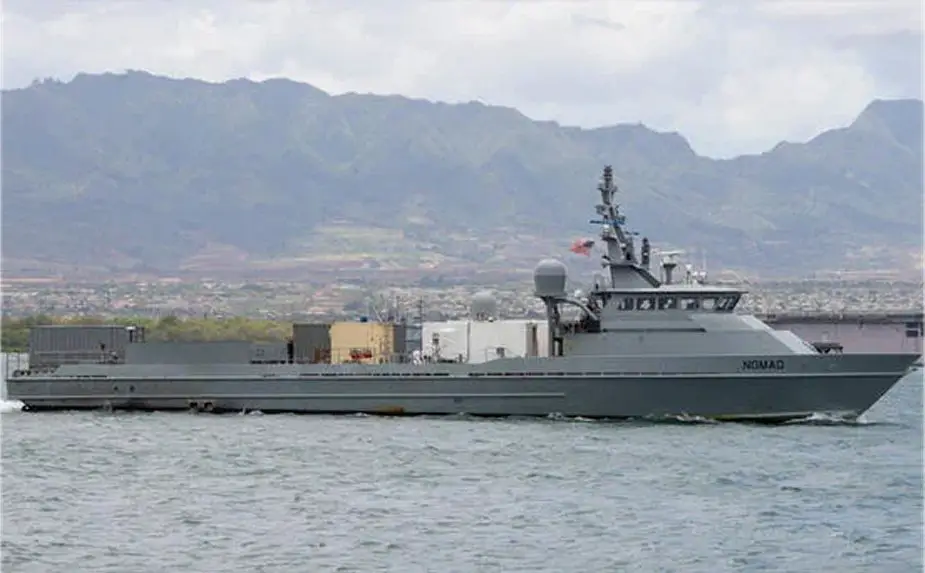According to a PR published by L3Harris Technologies on August 3, 2022, the firm in collaboration with the U.S. Navy, demonstrates how unmanned surface vehicle technologies can provide critical support for traditional maritime forces during the 2022 Rim of the Pacific Exercise.
Follow Navy Recognition on Google News at this link
 Nomad Unmanned Surface Vessel (Picture source: L3 Harris)
Nomad Unmanned Surface Vessel (Picture source: L3 Harris)
The Navy will operate its medium-displacement unmanned surface vehicle, Nomad, which is outfitted with numerous L3Harris autonomous technologies that enable it to perform strategic missions safely and accurately, without the need for onboard support staff. The technology includes L3Harris control, electro-optical, and communications systems.
Nomad supports different maritime missions, including information, surveillance and reconnaissance, and maritime domain awareness missions. It can operate in an autonomous mode, including maintaining vessel awareness and complying with international collision avoidance guidelines, and can be remotely piloted from an onshore or ship-based ground control station.
RIMPAC provides training opportunities to enhance strategic relationships critical to ensuring maritime safety and security around the world. Twenty-six nations, surface ships, submarines, national land forces, aircraft, and nearly 25,000 personnel are expected to participate in this year’s RIMPAC.
The NOMAD USV is participating in fleet experimentation exercises to further mature the autonomy systems, demonstrate system reliability, and explore employment concepts for coordinated operations with manned combatants while stressing our command and control systems.
The Ghost Fleet Overlord program, executed by SCO in partnership with Program Executive Office, Unmanned and Small Combatants, is playing a central role in informing the Navy’s new classes of USVs and serving as part of extensive technical risk-reduction efforts.



